by Br. Alexis Bugnolo
There are many Saints at Rome which are unknown to the world, but whose virtues, example, heroism and holiness shine brightly in Heaven and Earth unto this day. As part of FromRome.info’s coverage, therefore, I would be amiss to neglect to cover the lives of some of them, which are important examples of unity for the Catholic Church.
The first of which, I want to speak of Saint Peter of Anagni, also known as San Pietro da Salerno (not to be confused with the homonymous Lombard tutor and prince, who died in 855 A. D., who usurped the throne of Salerno from Sico II). Not much is found online about this saint, whether in English or Italian, so here I publish the most complete online biography of this great man, for the sake of Catholics everywhere.
Birth and Youth
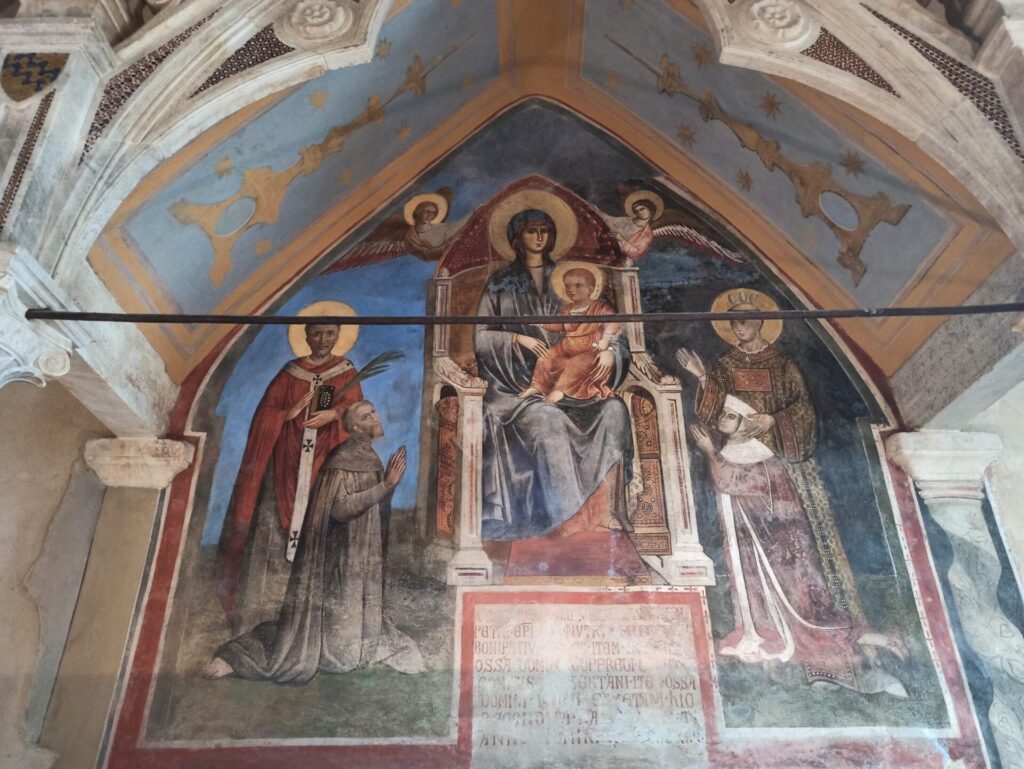
Peter was of the princely house of Salerno, a family of Lombards which had come to Italy in the 6th century as conquerors. In recent centuries they had ruled a variety of minor states in southern Italy, the chief of which was the Principality of Salerno.
It is not clear from which branch of the family, Saint Peter was descended, nor do we know the precise year of his birth or his parents names. His biography simply was content to say that in early childhood he was left an orphan, and thus came to be entrusted to the Abbey of Sts. Mary and Saint Benedict, at Salerno, in accord with the Rule of Saint Benedict, which in chapter 59, provided for the sustenance of the orphans of the nobility.
The Abbey itself, founded in 793 A. D., by the princes of Salerno, and was named by the Emperor Otto III as the head of all the Benedictine Monasteries in the region in 990 A. D.. In 1023 A. D., however, it was seized by the Lombard princes Guaiferio, Maione and Maginolfo, nephews of Guiamario IV, who held it until 1043 A. D., thus providing for a solid motive to abandon orphans to the care of the returning monks.
In the Service of Popes
It is this turbulent period in the history of the Abbey, that Saint Peter comes to be known in the historical record, when sometime after 1049 and before 1062, Saint Hildebrand, in his capacity as legate of Pope visited the monastery, and took Peter into his entourage. According to the historical record, Saint Hildebrand was in the area in 1059, accompanying Pope Nicholas II to the Council of Melfi (held Aug. 3rd to 25th), which was organized by the Abbot of Monte Cassino and which the Abbot of Sts. Mary and Benedict, at Salerno, would have undoubtedly attended. However, the Saints could have met in 1050, when Pope St. Leo IX held a Synod at Salerno, at which St. Hildebrand was most likely in attendance.
From this point on, St. Peter of Anagni was in the papal service, with the official title of papal chaplain, and most likely as a close collaborator with St. Hildebrand, who, in his youth, studied at the Benedictine Abby of St. Mary’s, on the Aventine, at Rome, under Archbishop Lorenzo of Amalfi, a town just a few miles north of Salerno, on the coast.
Bishop of Anagni
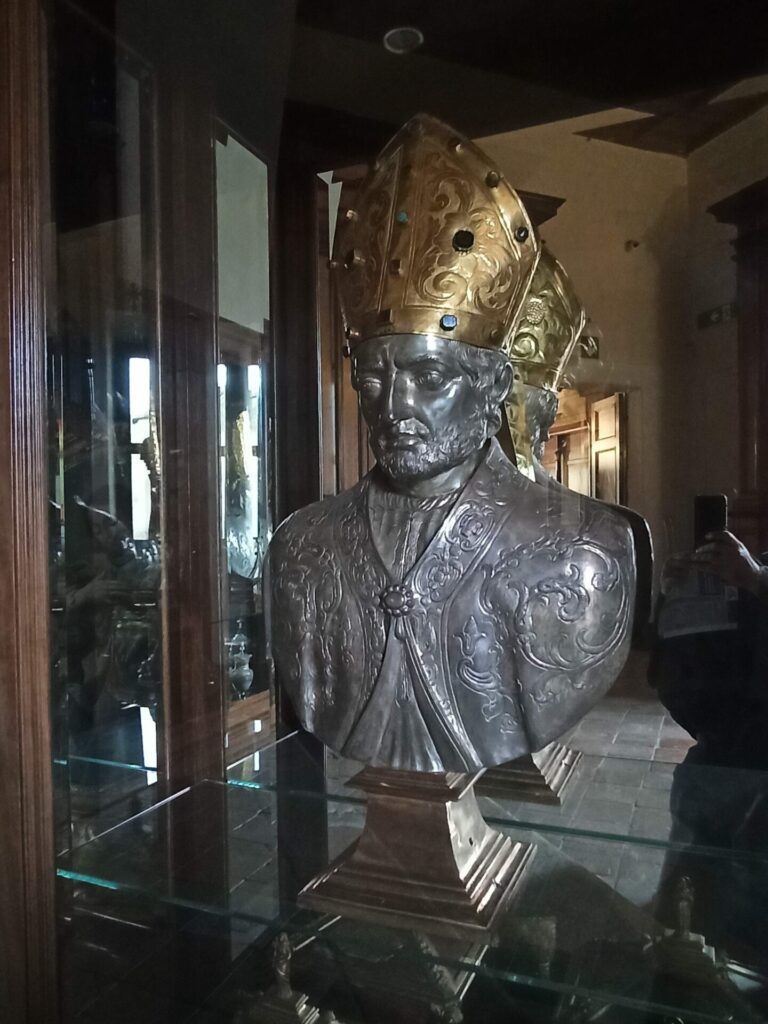
What is certain, though, is that Pope Alexander II nominated Saint Peter Bishop of Anagni in 1062 A. D.. This nomination took place during the rivalry (Oct. 28, 1061- May 31, 1064 A. D.) of Pope Alexander with the anti-pope Otto II (Peter Caldalo 1010-1072 A. D.), during which the true Pope sought to put bishops loyal to him in the empty episcopal sees of the Roman Province.
Saint Peter, then, must have been a most trusted collaborator of the Pope and a man of firm character who would be trusted not to cede to threats and bribes — rare virtues in the 11th century’s many tumults and controversies.
About a decade after his consecration as Bishop, the Roman Pontiff sent him on a diplomatic mission to the Roman Emperor, Michael VII Doukas (October 1, 1071- to March 31, 1078 A. D.). The formal motive for this mission seems to be suggested by the historical circumstances, in which the Papacy, having made a strong alliance with the Normans in southern Italy, found it necessary to send someone of the princely house of the Lombards of Salerno, the rivals of the Normans, as papal legate to Constantinople; and materially, in the fact that the recent schism of 1054 A. D., requires the Papacy to send someone who both spoke Greek and could with learning treat with questions both theological and legal. The occasion of the mission, however, appears connected to the central role played by the Abbot of Monte Casino in negotiating the marriage of Olipiade (Helena), daughter of Robert the Guiscard, to the son of Emperor Michael VII, Constantino Profirogenito, which made peace between the Normans and Greeks. Their marriage took place in 1074.
During this mission “pro concordia fidei,” the biographers of St. Peter of Anagni say that he experienced a heavenly vision of Our Lady, who told him to seek the intercession of St. Magnus, the patron Saint of Anagni, to cure the Emperor of his chronic and deadly disease; which Saint Peter promptly did, probably with the application of a relic of the Saint. In gratitude the Greek Emperor bestowed upon the Saint rich presents which he used to embellish the reconstruction of the Cathedral of Anagni, an impressive work which merited the Saint to be depicted for long ages afterwards with a Cathedral in his right hand.
St. Peter rebuilds the Cathedral of Our Lady, at Anagni

St. Peter’s most lasting work on earth, was the the reconstruction of the Cathedral of Anagni began in 1072-74 A. D.. When he came to the diocese, the church was in complete ruins. He rebuilt it on the highest point of the city, in Romanesque style and adorned it with the most beautiful inlaid mosaic floors, which still exist to this day. The construction began with the Crypt dedicated to the newly rediscovered remains of Saint Magnus 1068, both of which ere was not completed until 1104, though in subsequent decades and centuries various minor works were undertaken.
The Crypt of St. Magnus, which came to house the mortal remains, also of St. Peter, was called the “Sistine Chapel of the Middle Ages” due to its wonderful Biblically inspired fresco paintings all all walls and ceilings, among which are a series dedicated to the life and martyrdom of Saint Magnus.
This work of restoration was truly inspired of God as can be seen by the important role this Cathedral would play in Church history in subsequent generations. In her were canonized Saint Bernard of Clairvaux, Saint Clair of Assisi, Saint Edward II King and Confessor and Saint Peter the Hermit. Here Pope Alexander III excommunicated the antipope Victor IV along with Hohenstaufen Emperor Frederick Barbarossa, on March 24, 1160 A. D.. Here, Pope Gregory IX imposed excommunication on Frederick II and reconciled him to the Church on September 1, 1230 A. D.. Here, the Cardinals elected Pope Boniface VIII, after the renunciation of the papacy by St. Celestine V. Here Boniface promulgated the Bull Unam Sanctam. Here the adherents of the family of Colonna, in the service of the French King, slapped Pope Boniface, with such force, that he died of the trauma a month later.
St. Peter reforms the Diocese of Anagni
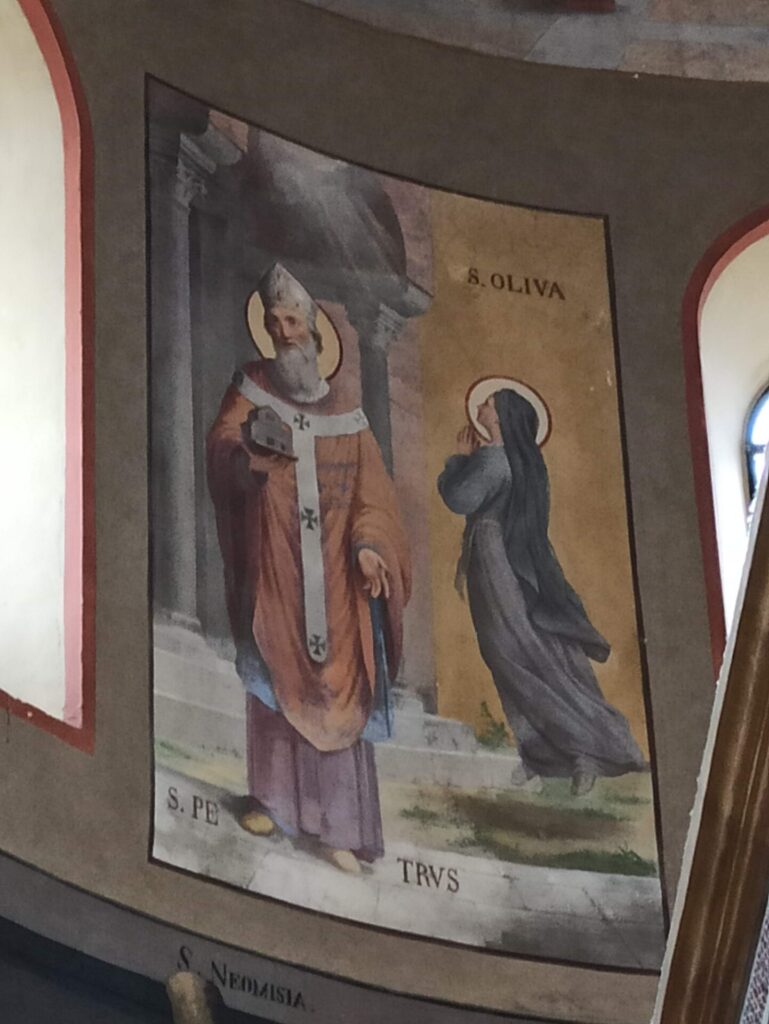
Our Saint, however, became famous as a zealous adherent of the Gregorian reforms which Pope St. Gregory VII (Hildebrand) his patron, would lead from April 23, 1073 until his death on May 25, 1085 A. D., in one of the most stunning pontificates in the entire history of the Roman Church, which put the Pope in ecclesiastical and civil conflict with the principal rules of his day, and which he prosecuted with both numerous councils, synods, excommunications and wars.
The Gregorian Reform consisted in stamping out simony, concubinage and dissolute living among the clergy and religious of the Church, vindicating the rights of the Church over her properties and possessions, and insisting that ecclesiastical superiors be appointed and nominated only by the Church. This latter conflict was called the Investiture Controversy, and it put the Pope and his loyal supporters head-to-head with the lax and worldly clergy of his day, who wanted to collaborate fully with civil powers to the detriment of the Church’s institutions and the damnation of souls.
Saint Peter put this reform into practice in the Diocese of Anagni by reforming the clergy, taking back control of fields, vineyards, orchards and territories, which belonged to the Church, but through long neglect had come into the de facto control of laymen, princes and individual clerics. In this he was a close supporter of St. Bruno of Segni (1045-1123 A. D.), whose zeal in this regard was so strong, that he publicly rebuked Pope Pascal II for conceding a privilege to the German Emperor, and forced him to recant it at the First Lateran Council of 1116, where after the recantantion, St. Bruno arose and said, “I thank God that my lord and pope has abjured his heresy!”
Saint Peter on the First Crusade
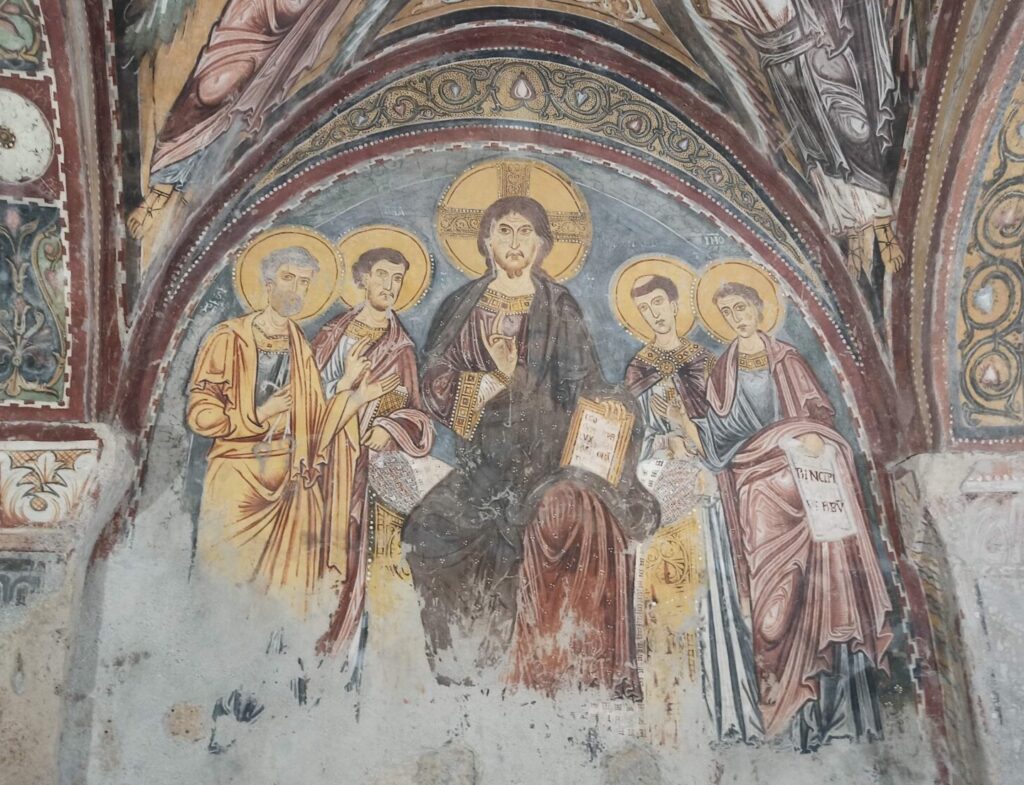
At the end of his life, Saint Peter attended the First Crusade with Bohemond of Altavilla (d. 1111). Bl. Pope Urban II, at the Council of Clermont in 1095, had invited Bishops from all of Christendom to accompany the Crusaders as chaplains and military counselors. Saint Bruno, Peter’s close friend, had already showed his zeal by accompanying Bl. Urban II to France and back again, to promote the First Crusade and field an army to deliver Rome from the clutches of the anti-pope, Clement III, a feat accomplished in 1097 by one of the French Crusading contingents under the command of Count Hugh of Vermandois, brother of the Capetian King of France, Philip I. Like Philip, Hugh was son of Anne of Kyiv (1033-1075 A. D), who had married his father, Henry I.
It was then, as groups of Crusaders filtered their way down the peninsula of Italy, that Bohemond of Altavilla, took note of their holy quest and joined them by raising 35,500 soldiers. It was this host that St. Peter of Anagni joined, as chaplain and custodian. He remained in the Holy Land until 1102, though is not clear whether he joined Bohemond in 1097 when he set out, or in 1099 after he had become Prince of Antioch.
Bohemond was by far the most able military general of his age, and his role in the First Crusade was essential to its victory. Having had long experience fighting against the Greek Emperors for the control of southern Italy and western Greece, he had extensive knowledge of lands of the East and the methods of fighting in those distant regions. As such, he was one of the few principal leaders who refused to swear an oath of fealty to the Greek Emperor and under his leadership lead the attack on Antioch as well as its successful defense against a much larger host of Turks which had come to relieve its siege. In consequence, he proclaimed himself Prince of Antioch and was confirmed in this by the Papal Legate. Bohemond blazed a path in relations with the Christians of the East by marrying an Armenian princess.
St. Peter would have accompanied Bohemond to Jerusalem, for Christmas of 1099 A. D., where the latter fulfilled his crusader vows to journey to Jerusalem (he had not participated in its siege and capture) and with Peter attended the consecration of the Latin Patriarch of Jerusalem, Dagobert of Pisa. Arriving on Dec. 21, Bohemund immediately contested the uncanonical election of Arnulf of Chocques, and proceeded to his deposition after Christmas. He then promoted Dagobert to the See of Jerusalem, with the agreement of all the Crusading princes. St. Peter then was witness to the investment of Godfrey Duke of Bouillon with the title of Protector of the Holy Sepulcher and Bohemond of Altavilla as Prince of Antioch. After affairs became even more controverted in the Crusader States, St. Peter of Anagni returned back to his Diocese around 1102.
Saint Peter’s Death and Glorification
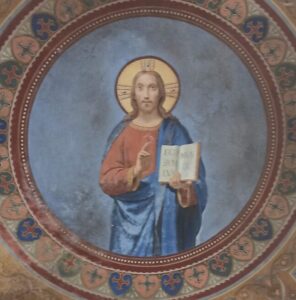 Saint Peter passed from this life on August 3, 1104 A. D.. As he did, Saint Bruno of Segni, from his mountain top See across the valley beheld a splendid light illumine the city of Anagni. Understanding its significance, he rushed to the city and presided over Saint Peter’s funeral. Immediately numerous miracles were worked in the presence of his relics and at his intercession, provoking such marvel among the Catholics of the Roman Province, that Pope Pasqual II on June 4, 1109 A. D., decreed his canonization in the bull, Dominum Excelsum and authorized his public cult. Saint Bruno himself wrote the postulatio and presided at the ceremony of canonization himself, as the Papal Legate. Saint Peter’s relics were transferred by his successor Bishop Peter II, to the very crypt of St. Magnus which he had built during his lifetime. The Cathedral then received the honor of being consecrated by Pope Alexander III in 1179 A. D. on the 75th anniversary of the Saint’s death.
Saint Peter passed from this life on August 3, 1104 A. D.. As he did, Saint Bruno of Segni, from his mountain top See across the valley beheld a splendid light illumine the city of Anagni. Understanding its significance, he rushed to the city and presided over Saint Peter’s funeral. Immediately numerous miracles were worked in the presence of his relics and at his intercession, provoking such marvel among the Catholics of the Roman Province, that Pope Pasqual II on June 4, 1109 A. D., decreed his canonization in the bull, Dominum Excelsum and authorized his public cult. Saint Bruno himself wrote the postulatio and presided at the ceremony of canonization himself, as the Papal Legate. Saint Peter’s relics were transferred by his successor Bishop Peter II, to the very crypt of St. Magnus which he had built during his lifetime. The Cathedral then received the honor of being consecrated by Pope Alexander III in 1179 A. D. on the 75th anniversary of the Saint’s death.
SHORT VIDEO OF THE CRYPT OF SAINT MAGNUS:
________________
CREDITS: All photographs are copyright FromRome.Info 2022.


Thank you for this.
Oh Lord God, Mother Mary, who is our Saint Peter of Anagni today?
Alas, we do not yet have one.
What we have in these last days are very simple people who will not bow down to demonic authorities and will risk life and limb for love of God and neighbor.
We have a youth who will stand out before their bishops and even the anti-pope undaunted and willing to throw out the blasphemous idol into the river.
We have nurses who for their love of neighbor called out the doctors at the risk of losing their income and being stoned to death and vandalized at their homes because they know the “vaccines” are killing the people they are committed to take care for.
Recently, we see a head of a state who for love of God and neighbor went out to Christian countries to rally them into war against the biggest Masonic Force ever launched against humanity.
The Holy Spirit does wonders to even simple men and women that if these were put before the cardinals who plotted against Pope Benedict XVI they would hide themselves in a hole and flee.
Has there ever been an era of peace for Christians in this life, or must we always wait for the next?
SAINTS DE L’ÉGLISE DE ROME — SAINT PIERRE D’ANAGNI : Un exemple important pour l’unité de l’Église catholique aujourd’hui
#Praedicatho
https://www.homelie.biz/2022/12/saints-de-l-eglise-de-rome-saint-pierre-d-anagni.html
Merci beaucoup, mon Pere!